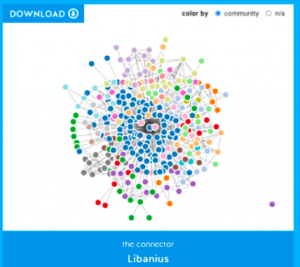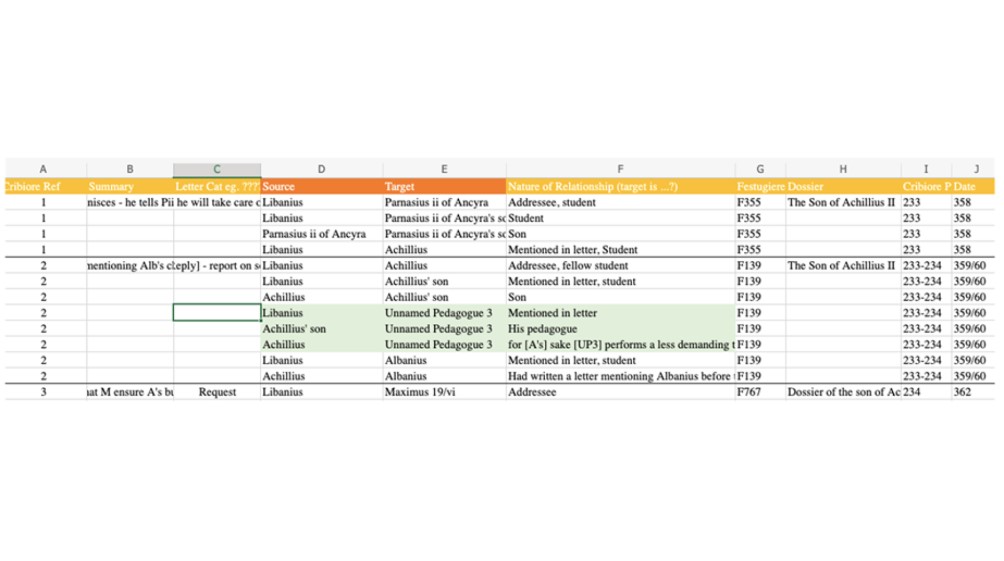What happens when we focus our attention on people who aren’t named in our sources? This is the question that one of our undergraduate students has grappling with over the summer. Annabelle Mansell, a second-year Classical Studies student who had been successful in securing a bursary from the Undergraduate Research Opportunities Scheme (UROS), worked with Hope Williard and Jamie Wood on a project called ‘Invisible Agents: Networks of Learning in Late Antiquity’. Annabelle has written a blog post on the experience:
The aims of this project were to begin to understand how low-status, often unnamed individuals functioned within the broader educational network of Late Antiquity. We examined many of the letters of one well-connected teacher, Libanius, and transferred the key relationships discussed into an Excel spreadsheet, which allowed the creation of visual depictions of Libanius’ networks through graphs. With the information being presented in this digital, visual format, it is possible to do specific enquiries into Libanius’ networks. For example, one could see the centrality of an unnamed pedagogue (an enslaved person entrusted with overseeing the education of their master’s children) within a given family cluster by looking at a specific dossier of letters, or one could investigate the changing shapes of the network chronologically. The data being in this form allows for further investigations and a visual presentation of relationships which was not immediately available before. The graphs that have been generated already from the research begin to show how unnamed individuals’ centrality within a network can shift depending on the size of networks, and have begun to reveal more about the nature of the positions of and attitudes towards pedagogues. This project has started to lay the foundation for this area of enquiry, illustrating the value in transferring texts into data that can support visualisations.

This project presented unanticipated challenges. Learning how to operate Microsoft Excel and ConnectTheDots took more time than expected, and technical issues caused large losses of data on multiple occasions, which massively delayed progress. This had an impact on how targets were set and achieved, as I had to learn to create a flexible schedule which allowed for surprise setbacks. A second issue was the large quantity of data available to me throughout this project, making it difficult to complete analysis of all of the letters that I had initially planned.

My supervisors have been invaluable to me throughout this project. The wealth of experience and knowledge they possess (both regarding Late Antiquity and the procedures of research) have been a huge help, and without their guidance and support I could not have achieved as much as I did. Our meetings were always beneficial and encouraging, and even when I was struggling most I was flooded with support and further avenues to explore. It has been a privilege to work on this project together, and an invaluable introduction to collaborative research.
This experience has been a unique opportunity which has allowed me to explore areas I am interested in pursuing further, as well as introducing me to new ideas and burgeoning approaches to handling historical textual data. I have gained technical skills in digital literacy and network analysis tools such as ConnectTheDots. This experience will help with my future study as I have learnt how to extract important data from texts efficiently, and how to use more visual methods to analyse it. It has given me ideas for further possible related research and applications for this data, as we could use it to create maps and timelines, as well as more expansive graphs.
Please click here to download a poster about Annabelle’s project: Annabelle Mansell – poster



